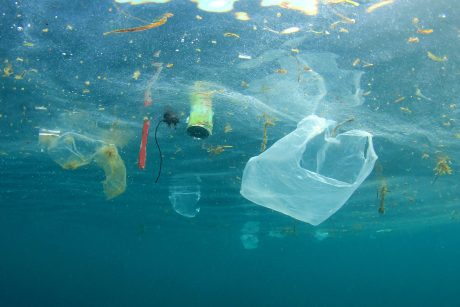World First Wooden Satellite
Discover LignoSat, the world’s first wooden satellite by Kyoto University and Sumitomo Forestry, pioneering sustainable space exploration. Learn about this incredible innovation!
In an exciting breakthrough for sustainable space exploration, Kyoto University and Sumitomo Forestry have proudly unveiled LignoSat, the world’s first wooden satellite. The innovative satellite, crafted from magnolia wood using traditional Japanese techniques, is set to launch from the Kennedy Space Center in Florida this September. This pioneering project aims to reduce space debris and promote environmentally friendly space activities. Unlike conventional satellites that release harmful metal particles upon reentry, LignoSat will burn up cleanly, posing no air pollution risks. The mission represents a significant step toward expanding the use of wood as a sustainable resource, with potential future applications in building human habitats on the moon and Mars. Data collected from this mission will drive further advancements, including the development of LignoSat-2 and new, durable wood-based materials.
World First Wooden Satellite
Have You Ever Imagined a Satellite Made of Wood?
In a groundbreaking move towards sustainable space technology, Kyoto University and Sumitomo Forestry have unveiled the world’s first wooden satellite, aptly named LignoSat. You might wonder, why wood? Well, it’s part of a broader initiative to promote environmentally friendly space exploration. So, let’s delve into this fascinating development and see what it means for the future of space travel.
A Unified Vision: Kyoto University and Sumitomo Forestry
On May 30, 2024, history was made as Kyoto University and Sumitomo Forestry introduced LignoSat to the world. This innovative project started back in April 2020 and is set to launch from the Kennedy Space Center in Florida to the International Space Station (ISS) in September 2024. Deployment from the Japanese Experiment Module Kibo is scheduled for about a month later.

This image is property of cdn4.premiumread.com.
The Choice of Wood: A Careful Selection Process
The team decided on magnolia wood, known for its strength and workability, after rigorously testing cherry, birch, and magnolia wood chips in space conditions. The wood was responsibly sourced from Sumitomo Forestry’s company forest, emphasizing sustainability right from the material selection phase.
Innovative Assembly Techniques
One of the most remarkable aspects of LignoSat is its assembly. Utilizing a traditional Japanese technique that doesn’t require any screws or glue, the 10-cubic-centimeter probe incorporates external solar panels and was built with precision and tradition in mind.

Health and Safety First
Ground tests were comprehensive, ensuring that the wooden satellite posed no health risks to astronauts or any potential hazards to precision equipment and optical components on board the ISS. Safety and functionality were key considerations during the development phase.
Addressing Space Clutter with Wooden Satellites
LignoSat represents a pioneering effort to reduce space debris. Current rules dictate that satellites must reenter Earth’s atmosphere post-mission to avoid becoming space debris. Traditional metal satellites can generate harmful particles upon reentry, posing air pollution risks. However, wooden satellites like LignoSat are expected to burn up entirely, significantly mitigating this issue.

Environmental Benefits and Future Prospects
Kyoto University professor and astronaut Takao Doi highlighted the importance of expanding wood as a sustainable resource. In the future, wood might be used to construct human habitats in space, both on the moon and Mars. The launch of LignoSat marks the first step towards this visionary goal.
Data Collection and Analysis
Over the next six months post-launch, data on various parameters such as wood expansion and contraction, internal temperature, geomagnetism, and electronic equipment performance will be collected. This valuable information will be received by Kyoto University’s communications station and will play a critical role in the development of a second satellite, LignoSat-2.
| Parameter | Measurement |
|---|---|
| Wood Expansion and Contraction | Continuous |
| Internal Temperature | Regular Intervals |
| Geomagnetism | Periodic |
| Equipment Performance | Ongoing |
A Deeper Understanding of Wood’s Potential
Sumitomo Forestry plans to analyze the results to understand how wood behaves at the nano-level in space conditions. This research aims to develop technologies to prevent wood from degrading and to innovate new uses for wood, including creating highly durable materials for building exteriors.
The Broader Impact on Space Exploration
What does this landmark achievement mean for the future of space exploration? Not only does it represent a significant step towards reducing the environmental impact of satellite reentry, but it also opens up new possibilities for using wood—an abundant, renewable resource—in ways we’ve never thought possible.
Conclusion: A Greener Future in Space
With LignoSat, Kyoto University and Sumitomo Forestry have demonstrated that sustainability and innovation can go hand in hand. This wooden satellite is not just a testament to human ingenuity but also a commitment to protecting our planet even as we reach for the stars. Imagine the possibilities: wooden structures on the moon, sustainable habitats on Mars, and a significant reduction in space debris right here in our orbit. The future of space exploration just became a lot greener.
So, are you ready to witness the dawn of eco-friendly space technology? The launch of LignoSat is just around the corner, and it promises to be the beginning of many more sustainable strides in our quest to explore and understand the universe.





